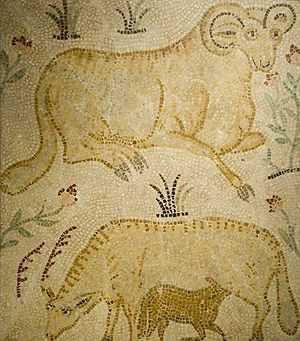Rusguniae

Rusguniae was a Roman colony in Berber north Africa,[1] situated at the location of present-day Tamentfoust -called "La Perouse" during French colonial times- at nearly twenty km from Icosium (actual Algeri in Algeria).
History
Rusguniae was created around 30 BC by Emperor Augustus as a colony for veterans of the Legio VIII Gemella, on a small trading place formerly Phoenician. It was one of the nine colonies for veterans he created in Berber Africa (they were: Igilgili, Saldae, Tubusuctu, Rusazu, Rusguniae, Aquae Calidae, Zuccabar, Gunugu and Cartenna). According to Plinius it was named: Colonia Augusti Rusconia[2] and was inside a rectangular territory of 800 meters by 400 meters. Rusguniae was the port of Auzia.
The city was under the Roman ius and their citizens were endowed with full civil rights. Rusguniae was a center of a Mauretania Caesariensis area fully Romanised, that in the late third century was even fully Christian. Rusguniae was a Christian see, nearly destroyed by the Vandals, but reconstructed by emperor Iustinianus, who promoted the construction of a church. Actually this relatively small "basilica" is the best preserved remains of Roman Rusguniae.[3]
In the Middle Ages, the site (of Rusguniae) was ruined and the stones were used for building in the neighboring town of Algiers. Excavations in the 19th c. brought to light a large Christian basilica with three naves and eleven bays. The central nave was decorated with figurative mosaics, pieces of which are in the Algiers Museum. In the Byzantine period the building was remodeled and expanded to five naves. The monument had a counterapse, perhaps from its foundation. Public baths were noted as early as the 19th c. In the last few years one of these (the SE) has been excavated and the hot and cold rooms have been cleared and carefully restored. Part of a mosaic pavement has been found, and in the course of the work remains of late dwellings were noted. - Princeton [4]
Rusguniae flourished under emperor Septimius Severus,[5] but after 640 AD was probably destroyed by the Arabs and disappeared for many centuries. In the 13th century some travelers cited the existence of huge ruins on the site, but now there are only a few remains.[6]
Notes
- ↑ "Detailed map of Mauretania Caesariensis".
- ↑ Africa Cristiana: Rusgoniensis (in Latin)
- ↑ Anatole-Joseph Toulotte, Géographie de l'Afrique chrétienne. Maurétanies, Montreuil-sur-mer 1894, pp. 127-130
- ↑ Princeton: Rusguniae
- ↑ Rusguniae
- ↑ Rusguniae's remains photo
Bibliography
- Mommsen, Theodore. The Provinces of the Roman Empire Section: Roman Africa. (Leipzig 1865; London 1866; London: Macmillan 1909; reprint New York 1996) Barnes & Noble. New York, 1996
- Morcelli, Stefano. Africa Christiana: in tres partes tributa, Volume 1. Editore Betton, 1816
- Reynell Morell, John. Algeria: The Topography and History, Political, Social, and Natural, of French Africa. Publisher N. Cooke. London, 1854 ( )
- Smith Reid, James. The Municipalities of the Roman Empire. The University Press. University of Michigan, 1913
- Smyth Vereker, Charles. Scenes in the Sunny South: Including the Atlas Mountains and the Oases of the Sahara in Algeria. Volume 2. Publisher Longmans, Green, and Company. University of Wisconsin. Madison,1871 ( )
See also
- Caesarea of Mauretania
- Altava
- Icosium
- Romano-Berber states
- Regnum Maurorum et Romanorum
- Christian Berbers
%2C_Algeria_04966r.jpg)